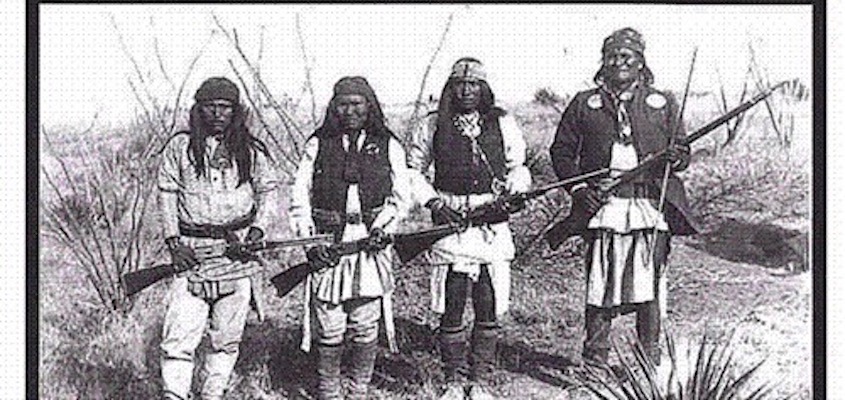by MARK P. FANCHER

Before slavery there was the theft of territory from indigenous nations followed in short order by a campaign of genocide.
“Though the surrender of the settlers’ nation building project may seem unreasonable, it is precisely what the settlers demanded of America’s indigenous first nations.”
Another Fourth of July has come and gone. Suburbanites grilled and ate themselves into a stupor. Fireworks blazed across the night sky. Trump finally got his parade and had a chance to watch large, long cannons raised upward and fired off in his honor – something that Freud could analyze for days.
But the lead-up to this year’s “Independence Day” was a bit different because many unusual suspects engaged in discussions about reparations for what they characterize as “America’s original sin.” Without any doubt, the enslavement of countless Africans was a massive sin – a crime against humanity of the highest order. But it was not America’s first sin. Before slavery there was the theft of territory from indigenous nations followed in short order by a campaign of genocide.
Many struggle with questions about the form and amount of reparations for Africans. However, the remedy for territorial theft is quite simple. Stolen land must be returned.It is a proposition that cannot be rejected. Consider a person who returns from a month abroad and discovers a trespasser living in his home. Clearly, the uninvited guest must vacate immediately, and go to jail. Never mind that during the homeowner’s absence the unauthorized resident made certain improvements to the premises. He had no right to be there in the first place. Likewise, while European settler populations engaged in major development projects in the Americas over the course of centuries and persuaded themselves that this territory is home, the settlers never had a moral right to colonize the western hemisphere.
“The remedy for territorial theft is quite simple. Stolen land must be returned.”
To suggest that the land must be returned is to induce breathless horror. The idea is so “impractical.” It would be so “disruptive.” But though the surrender of the settlers’ nation building project may seem unreasonable, it is precisely what the settlers demanded of America’s indigenous first nations. The Indian Removal Act of 1830 was a response to settlers’ demands for real estate. The government cleared large swaths of territory in the southeast by forcing the cross-country relocation of entire indigenous nations that had occupied these lands for as long as anyone can remember. Historian William Loren Katz explained:
“For Cherokees it was a murderous ‘trail of tears.’ President Martin Van Buren ordered seven thousand soldiers under General Winfield Scott to move a nation of fourteen thousand. Homes were burned, livestock, tools, printing presses, and personal possessions seized and destroyed.”
Other indigenous nations did not fare any better. “In 1832 the Choctaws were driven westward to this new ‘Indian Territory’ in midwinter. They were among the first to leave blood-stained footsteps in the snow. Removal meant more than a change of geography. Fragile cultures were uprooted by Army troops and driven to an alien climate and location.” Thus, justice demands that for all of the pain, death and dislocation caused by these and other historical crimes, descendants of European settlers must not only return the land to its original inhabitants, they must do it with apologies and appropriate reparations.
“Fragile cultures were uprooted by Army troops and driven to an alien climate and location.”
So, what of enslaved Africans and their descendants? They were very much a part of this history. What role did they play, and what is their responsibility? This is a far more complicated question because while Africans are not indigenous to the Americas, they are also not “settlers” in the usual sense of the word.
Enslaved Africans neither immigrated to these shores voluntarily, nor did they strive to conquer or exploit the first nations. In fact, their earliest experiences were quite the opposite. Rebellious Africans who fled the plantations found refuge, protection and membership in indigenous communities. Katz noted: “… there was one slave escape hatch that drove slave-owners to sputtering fury. Whites looked at Native American villages in the South and found black faces staring back at them. Paranoia told whites that these people were about to rise up, liberate slaves, and kill whites.”
More terrifying still was the alliance and ultimate merger of escaped Africans and the Seminole nation. Shoulder to shoulder they fought successful battles against the U.S. military. Something had to be done, and it was quickly concluded that if you can’t beat ‘em, coopt ‘em. So-called “civilized tribes” had demonstrated a willingness to forego certain aspects of their traditional cultures in favor of some European ways. Perhaps they would also participate in slave ownership. These indigenous nations took the bait, but the results were not expected.
“Rebellious Africans who fled the plantations found refuge, protection and membership in indigenous communities.”
Katz observed: “…the chains of slavery were fitted rather loosely on black people owned by Indians. Only the Chickasaws had a reputation for treating their slaves as badly as did white masters.The other nations practiced such a mild form of bondage that it upset U.S. slave owners.’” He noted further: “Whites who visited slaveholding Indians described slave men and women who were well-treated, adequately fed and cared for. U.S. slave-owners viewed this leniency as a sign Native Americans did not understand bondage.”
Black Agenda Report for more
